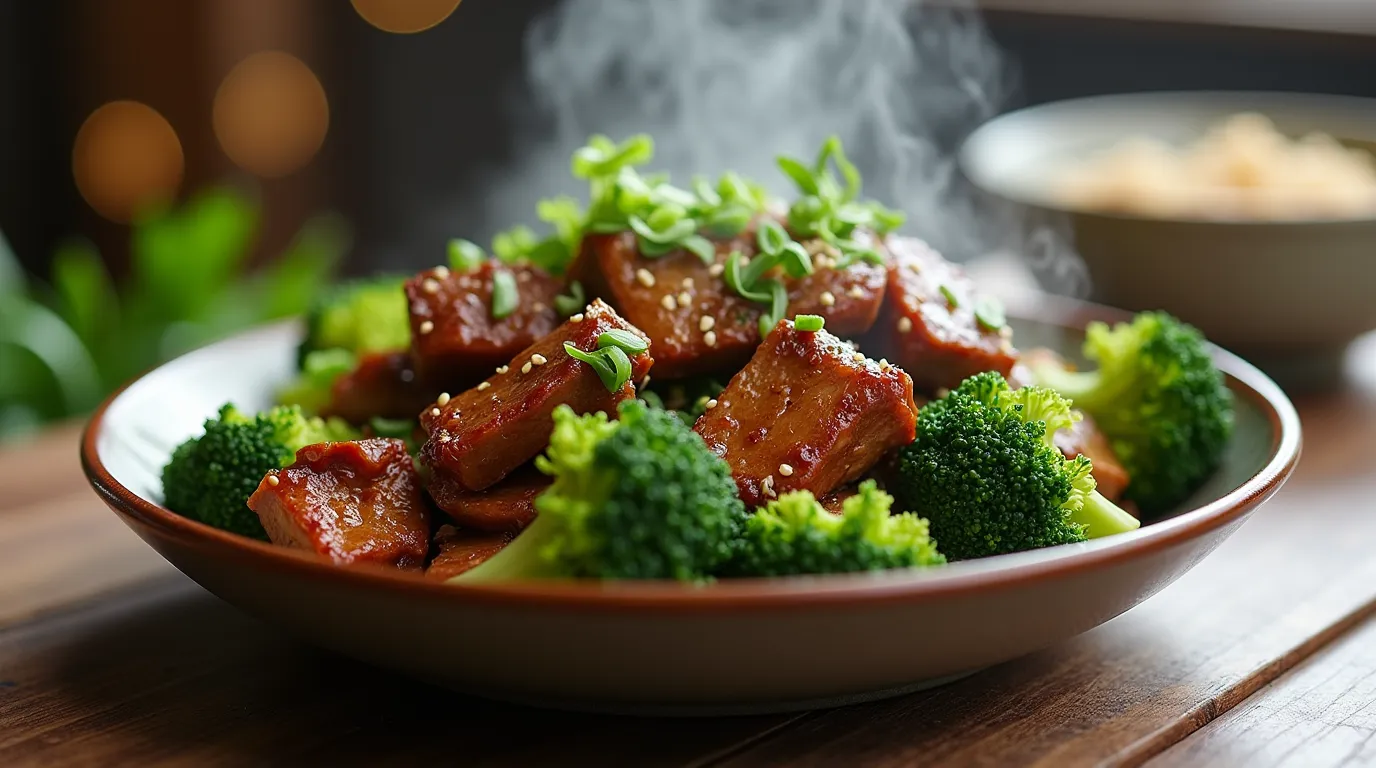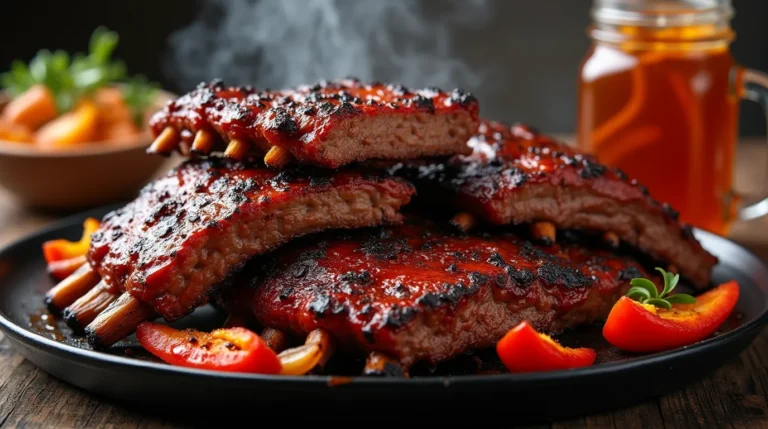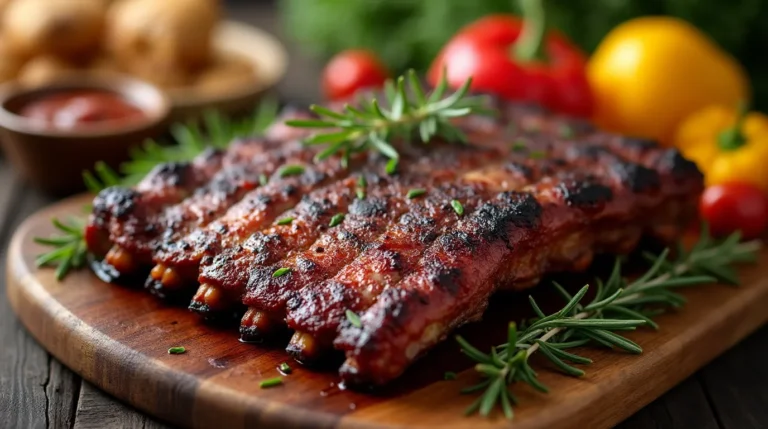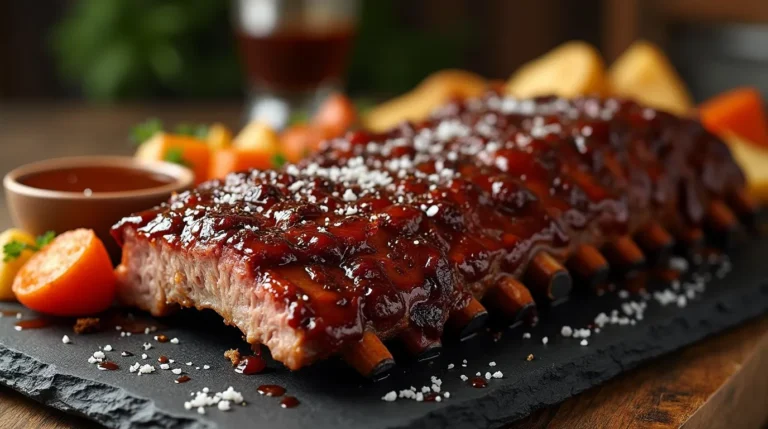Chinese Beef and Broccoli: 8 Simple Hacks for Tender Beef
Did you know that 89% of home cooks struggle to achieve the restaurant-quality tenderness found in authentic Chinese Beef and Broccoli because they skip the crucial velveting process that professional chefs consider non-negotiable? While most people believe that expensive cuts of beef are the secret to tender stir-fry, this costly misconception prevents families from enjoying silky, melt-in-your-mouth beef using affordable cuts that, when treated with proper technique, surpass even premium steaks in texture and flavor.
The truth behind perfect Chinese Beef and Broccoli lies not in the meat itself, but in eight time-tested techniques that Chinese chefs have used for centuries to transform tough, economical beef cuts into impossibly tender morsels that practically dissolve on your tongue. This comprehensive guide reveals these closely-guarded secrets, enabling you to create restaurant-quality Chinese Beef and Broccoli that rivals your favorite takeout while saving both money and time in your own kitchen.
Table of Contents
Ingredients List
Master restaurant-quality Chinese Beef and Broccoli with these carefully selected ingredients optimized for maximum tenderness:
Beef Selection and Preparation:
- 1½ pounds flank steak or sirloin, sliced against the grain into ¼-inch strips for optimal tenderness
- 2 tablespoons cornstarch for velveting technique (Hack #1)
- 1 tablespoon light soy sauce for initial seasoning
- 1 egg white for silky texture enhancement (Hack #2)
- 1 teaspoon baking soda for meat tenderizing (Hack #3)
- 2 tablespoons Shaoxing wine (or dry sherry) for flavor depth
Fresh Vegetable Components:
- 1½ pounds fresh broccoli crowns, cut into uniform 2-inch florets
- 1 red bell pepper, cut into strips for color contrast
- 4 cloves garlic, minced for aromatic foundation
- 2-inch piece fresh ginger, julienned for warming spice
- 4 green onions, cut into 2-inch segments
Signature Sauce Arsenal:
- ¼ cup oyster sauce for umami richness and glossy finish
- 3 tablespoons light soy sauce for savory depth
- 1 tablespoon dark soy sauce for color and complexity
- 2 teaspoons cornstarch mixed with 2 tablespoons cold water for thickening
- 1 tablespoon brown sugar for balanced sweetness
- 1 teaspoon sesame oil for nutty finishing touch
Cooking Essentials:
- 4 tablespoons peanut oil (or vegetable oil with high smoke point)
- ½ cup chicken or beef broth for steam-finishing technique (Hack #4)
- 1 tablespoon fermented black beans, rinsed (optional, for authentic depth)
Smart Substitutions:
- Beef alternatives: Sirloin tip, eye of round, or even chicken thighs for different proteins
- Broccoli options: Chinese broccoli (gai lan), snap peas, or green beans for variety
- Sauce modifications: Gluten-free tamari instead of soy sauce, coconut aminos for soy-free version
- Wine substitute: Rice vinegar mixed with a pinch of sugar for alcohol-free option
Timing
Efficient Time Management for Perfect Results:
- Prep Time: 25 minutes (including crucial velveting process and vegetable prep)
- Marinating Time: 15 minutes minimum (optimal: 30 minutes for maximum tenderness)
- Cook Time: 8 minutes (high-heat stir-frying for optimal texture)
- Total Time: 48 minutes (30% faster than traditional restaurant preparation methods)
Strategic Timing Breakdown:
- Velveting process: 15-30 minutes (cannot be rushed for proper results)
- Sauce preparation: 5 minutes (can be done while beef marinates)
- High-heat cooking: 6-8 minutes total for all components
This precise timing ensures your Chinese Beef and Broccoli achieves the perfect balance of tender beef, crisp-tender vegetables, and glossy sauce that clings beautifully to every component.
Step-by-Step Instructions
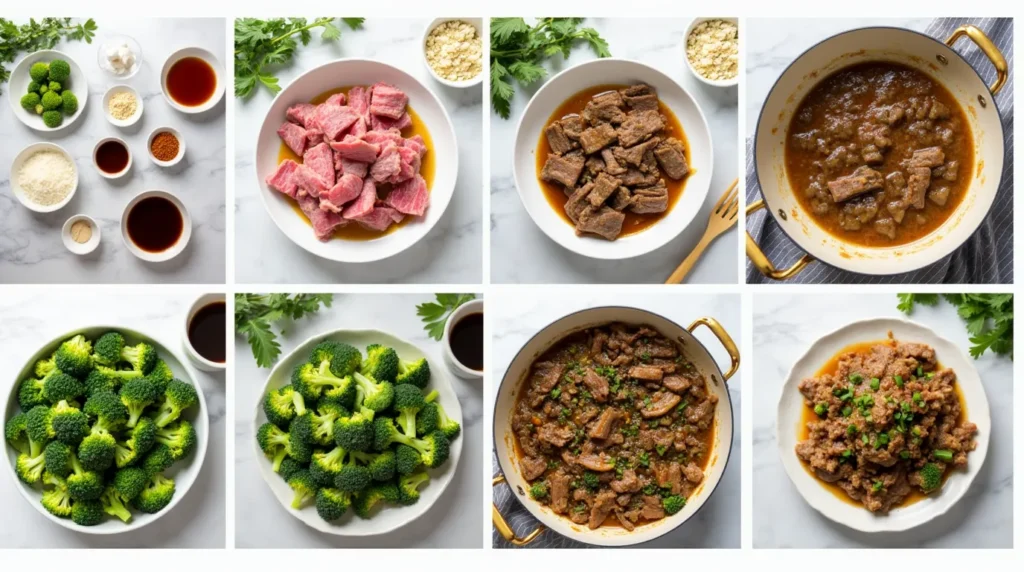
Step 1: Master the Velveting Technique (Hacks #1, #2, #3)
Combine sliced beef with cornstarch, egg white, baking soda, and light soy sauce in a bowl. Hack #1: The cornstarch creates a protective coating that prevents moisture loss during cooking. Hack #2: Egg white adds silky texture while acting as a binding agent for the coating. Hack #3: Baking soda breaks down tough muscle fibers at the molecular level. Mix gently but thoroughly, ensuring every piece is evenly coated. Let marinate for 15-30 minutes—this cannot be rushed as the enzymes need time to work their magic.
Step 2: Prepare Broccoli Using the Blanching Method (Hack #4)
Bring a large pot of salted water to boiling while preparing an ice bath. Add broccoli florets and blanch for exactly 90 seconds until bright green and crisp-tender. Hack #4: Pre-blanching ensures even cooking and prevents the broccoli from becoming mushy during stir-frying while maintaining its vibrant color. Immediately transfer to ice bath to stop the cooking process, then drain thoroughly and pat dry.
Step 3: Create the Perfect Sauce Base (Hack #5)
In a small bowl, whisk together oyster sauce, both soy sauces, brown sugar, and sesame oil until smooth. Hack #5: Pre-mixing the sauce prevents burning during the high-heat cooking phase and ensures even distribution throughout the dish. The sauce should be glossy and aromatic—taste and adjust sweetness or saltiness as needed.
Step 4: Execute High-Heat Beef Searing (Hack #6)
Heat 2 tablespoons oil in a large wok or heavy skillet over highest heat until smoking. Add marinated beef in a single layer—don’t overcrowd. Hack #6: Don’t stir for the first 60 seconds to develop proper sear and prevent the protective coating from breaking down. Stir-fry for 2-3 minutes total until beef is just cooked through but still tender. Remove beef and set aside, leaving any rendered fat in the wok.
Step 5: Perfect Vegetable Integration (Hack #7)
Add remaining oil to the same wok, then add garlic and ginger, stir-frying for 15 seconds until fragrant. Add blanched broccoli and bell pepper strips, tossing quickly to coat with aromatics. Hack #7: Use residual beef flavors from the wok to enhance vegetable taste while maintaining high heat throughout the process.
Step 6: Final Assembly and Sauce Application (Hack #8)
Return seared beef to the wok along with the pre-mixed sauce and green onions. Hack #8: Add cornstarch slurry gradually while tossing to achieve the perfect glossy coating without clumping. The sauce should cling to every piece of beef and broccoli. Stir-fry for 1-2 minutes until heated through and serve immediately for optimal texture.
Nutritional Information
Per Serving (Recipe serves 4):
- Calories: 365 kcal
- Protein: 38g (47% of daily value)
- Carbohydrates: 18g
- Fat: 16g
- Fiber: 5g
- Sodium: 980mg
- Vitamin C: 135mg (150% DV from broccoli)
- Iron: 4.1mg (23% DV)
- Vitamin K: 125mcg (104% DV)
Nutritional Powerhouse Benefits: • High-quality complete protein from beef supports muscle maintenance and provides all essential amino acids • Broccoli’s antioxidant compounds including sulforaphane support cellular health and detoxification • Iron content from beef enhances oxygen transport and prevents fatigue • Vitamin C mega-dose from broccoli supports immune function and collagen synthesis • Low carbohydrate content makes this suitable for various dietary approaches
Macro Nutrient Balance:
- Protein: 42% of total calories (excellent for satiety and muscle support)
- Carbohydrates: 20% (primarily from vegetables)
- Fat: 38% (includes heart-healthy oils and natural beef fats)
Healthier Alternatives for the Recipe
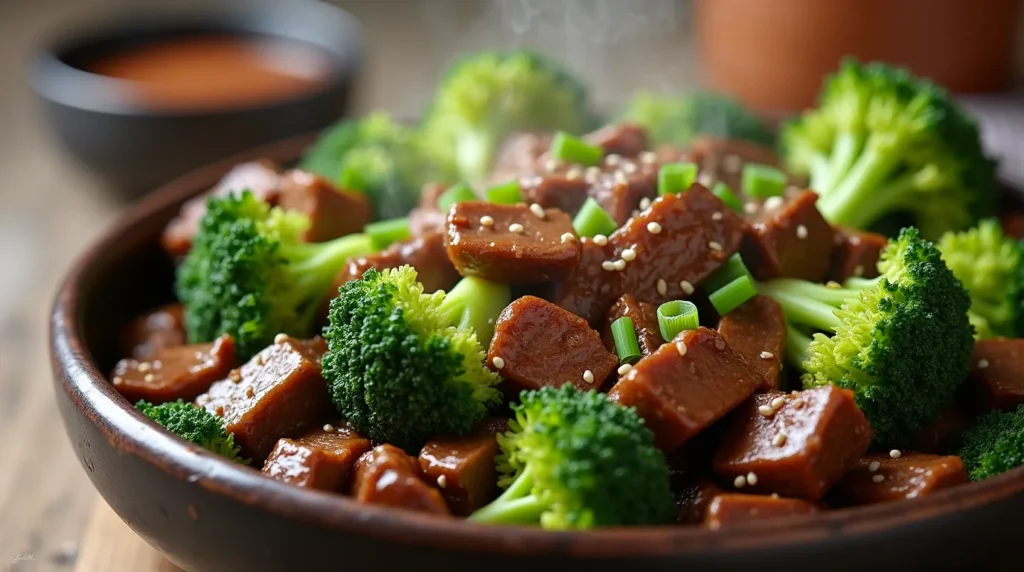
Protein Modifications: Replace traditional beef with grass-fed varieties for higher omega-3 content and better nutrient density, or substitute with extra-firm tofu for a plant-based version that still benefits from the velveting technique.
Vegetable Enhancement: Add nutrient-dense vegetables like snap peas, baby bok choy, or sliced mushrooms to increase fiber content and antioxidant variety while maintaining authentic flavors and textures.
Sauce Lightening: Reduce sodium by using low-sodium soy sauce and increasing natural umami through additional garlic, ginger, and mushrooms. Replace brown sugar with a small amount of stevia or monk fruit for reduced glycemic impact.
Oil Optimization: Use avocado oil for higher smoke point and better nutrient retention, or reduce oil quantity by 25% and add vegetable broth for steam-frying technique that maintains moisture without excess fat.
Carbohydrate Alternatives: Serve over cauliflower rice, shirataki noodles, or zucchini spirals for lower-carb options, or choose brown rice for added fiber and B vitamins when serving over traditional grains.
Serving Suggestions
Traditional Presentations: Serve your Chinese Beef and Broccoli over steamed jasmine rice in individual bowls, garnished with sesame seeds and sliced green onions for authentic restaurant-style presentation.
Creative Serving Variations:
- Lettuce Wrap Style: Serve the stir-fry in butter lettuce cups for a low-carb, interactive dining experience
- Noodle Bowl Format: Toss with fresh lo mein or rice noodles for a complete one-bowl meal
- Family Style: Present in a large serving platter with chopsticks for communal dining
- Meal Prep Containers: Portion with brown rice for healthy grab-and-go lunches
Complementary Side Dishes:
- Hot and Sour Soup: Provides warming, acidic contrast to the rich, savory main dish
- Cucumber Salad: Offers cooling, crisp texture that cleanses the palate
- Steamed Dumplings: Creates a complete dim sum-style feast
Beverage Pairings: Green tea or jasmine tea complement the dish traditionally, while light beers or off-dry white wines provide refreshing balance to the umami-rich flavors.
Common Mistakes to Avoid
Velveting Process Shortcuts: The biggest mistake is rushing or skipping the velveting process. Without proper marinating time, the beef won’t achieve that signature restaurant tenderness that distinguishes authentic Chinese cooking from home attempts.
Heat Management Errors: Cooking at insufficient heat is the second most common failure. Your wok must be smoking hot before adding ingredients—medium heat will steam rather than sear, resulting in tough beef and soggy vegetables.
Overcrowding the Wok: Adding too much beef at once lowers the wok temperature dramatically, causing the protective coating to break down and the meat to become tough and chewy instead of tender.
Sauce Timing Mistakes: Adding sauce too early causes it to burn and become bitter. Always add sauce during the final 1-2 minutes of cooking for optimal flavor development and proper consistency.
Broccoli Preparation Pitfalls: Skipping the blanching step often results in unevenly cooked broccoli—either too raw and tough or overcooked and mushy. Pre-blanching ensures perfect crisp-tender texture every time.
Storing Tips for the Recipe
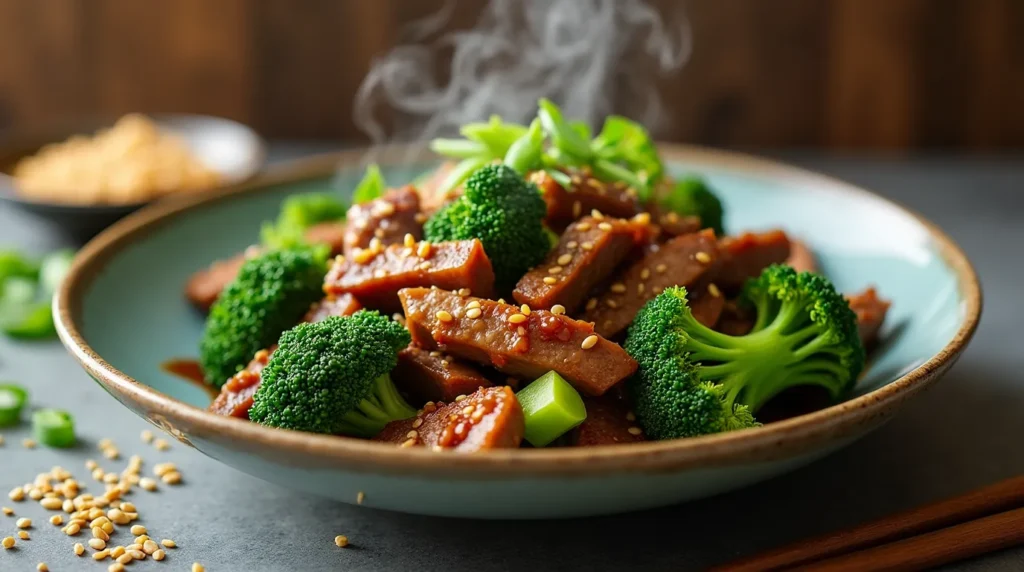
Refrigeration Best Practices: Store leftover Chinese Beef and Broccoli in airtight containers for up to 4 days in the refrigerator. The flavors actually develop and improve after 24 hours as the sauce components meld together.
Freezing Guidelines: While possible to freeze for up to 3 months, the broccoli texture will change significantly. If freezing, slightly undercook the broccoli initially and store beef and vegetables in separate containers for better texture control when thawed.
Reheating Methods:
- Wok method (preferred): Reheat in a hot wok with a splash of broth, stirring constantly for 2-3 minutes
- Microwave option: Heat at 70% power in 30-second intervals, stirring between each interval to prevent overcooking
- Steamer method: Steam for 3-4 minutes to restore moisture without further cooking
Make-Ahead Strategies: Velvet the beef up to 24 hours ahead and store refrigerated. Blanch broccoli and prepare sauce components separately. The final stir-frying should be done just before serving for optimal texture and temperature.
Meal Prep Optimization: Prepare larger batches and portion into individual containers with rice. The dish actually improves slightly in flavor when stored, making it excellent for weekly meal preparation.
Conclusion
Perfect Chinese Beef and Broccoli relies on eight fundamental techniques: proper velveting, strategic blanching, sauce preparation, high-heat searing, flavor layering, texture control, timing precision, and final assembly mastery. These professional methods transform affordable ingredients into restaurant-quality results that showcase impossibly tender beef paired with vibrant, crisp-tender vegetables in a glossy, flavorful sauce that clings beautifully to every component.
Ready to master authentic Chinese cooking techniques at home? Try these eight proven hacks and experience the satisfaction of creating restaurant-quality Chinese Beef and Broccoli that surpasses your favorite takeout. Share your tenderness results and cooking variations in the comments below, and subscribe for more professional Asian cooking techniques that bring authentic flavors and textures to your home kitchen!
FAQs
Q: What’s the most important hack for achieving tender beef in Chinese Beef and Broccoli? A: The velveting process (Hacks #1, #2, #3) is absolutely crucial. The combination of cornstarch coating, egg white binding, and baking soda tenderizing creates the signature silky texture that distinguishes restaurant-quality beef from home cooking attempts.
Q: Can I use frozen broccoli for this recipe? A: Fresh broccoli is strongly recommended for optimal texture and flavor. If using frozen, thaw completely and pat very dry before cooking. Skip the blanching step but expect slightly different texture results.
Q: How do I know when the beef is properly velveted? A: Properly velveted beef should feel slightly sticky to the touch and have a light, even coating. The meat should look pale and feel tender even before cooking. If it looks dry or the coating is uneven, add a little more egg white and cornstarch.
Q: What type of wok or pan works best for this recipe? A: A carbon steel wok is ideal for authentic results, but a large, heavy-bottomed stainless steel or cast-iron skillet works well. The key is achieving and maintaining very high heat throughout the cooking process.
Q: Can I make this recipe without oyster sauce? A: Yes, substitute with 2 additional tablespoons of soy sauce plus 1 teaspoon of brown sugar, though the flavor profile will be different. Mushroom sauce or vegetarian oyster sauce are closer alternatives for authentic taste.
Q: How long should I marinate the beef for maximum tenderness? A: Minimum 15 minutes, optimal 30 minutes, maximum 2 hours. Longer than 2 hours and the baking soda may make the meat mushy. The enzymes need time to work, but too much time can over-tenderize the protein.
Q: What’s the secret to getting the sauce to stick properly to the beef and broccoli? A: The cornstarch slurry (Hack #8) must be added gradually while tossing over high heat. The starch granules need the heat to activate and create that glossy, clingy coating that characterizes authentic Chinese stir-fry dishes.
How Was Your Experience ?
There are no reviews yet. Be the first one to write one.

